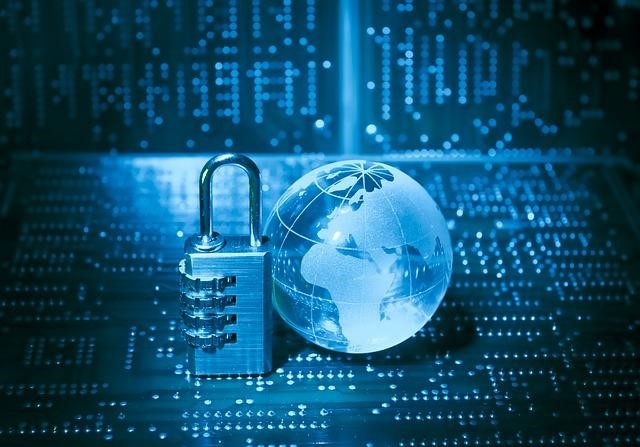Imagine you wrote a private letter, sealed it, and trusted that the only person who would read it would be the one for whom it was intended. What if instead, an unknown third party intercepted your letter, opened it, resealed it, and sent it along to its destination without your knowledge? That happens all the time in cyberspace! Every second, sensitive information travels across countless networks, exposing itself to cyber criminals who are more than willing to steal or divulge it for their own gain.
Public Key Infrastructure (PKI) prevents this from happening. PKI keeps information secure, verifies identity, and keeps all of your online transactions private and legitimate. From secure banking transactions to encrypted emails, PKI is the invisible force that keeps everything safe. Without it, there would be no such thing as online security. Knowing how PKI works and why it’s so important will help you protect your digital world. This blog breaks down the core components of PKI and why it remains a gold standard in cybersecurity.
1. Asymmetric Encryption
PKI is based on asymmetric encryption, a technique that uses two mathematically related public and private keys. Encrypted data is secure because public and private keys are related to, not derived from, one another, unlike passwords (which can be stolen or guessed).
Data encrypted with a public key can only be decrypted with the corresponding private key. Therefore, access to information in storage or in transit by unauthorized parties is all but impossible.
Think of it like a locked mailbox. Anyone can insert a letter into it (using the public key), but only the person with the key to the box (the private key) can open it. This system of lock and key ensures confidentiality and security in electronic communication.
Without asymmetric encryption, online banking, e-commerce, and secure messaging would not be feasible. PKI renders information sent across the Internet practically unreadable to hackers and is among the most effective security mechanisms in use today.

2. Digital Certificates
Encryption alone doesn’t cut it. If somebody creates a fake website identical to your bank’s, how can you be sure it’s the real deal? That’s where digital certificates come into play. Digital certificates are issued by trusted third-party organizations called Certificate Authorities (CAs) that verify the identity of websites, organizations, and individuals.
When you visit a secure website, your browser checks its digital certificate to ensure it is genuine. Your browser displays a padlock icon in the address bar if the digital certificate is valid. If not, your browser warns about possible security risks linked to the site.
Digital certificates are the foundation of PKI, guaranteeing that the other party in an online transaction or email exchange is who they say they are. Without digital certificates, all online transactions and email exchanges would be subject to fraud and data intrusion.

3. Key Management
It is extremely important to have good key management for any keys used with PKI. The reason being, any data communications that rely on a digital certificate can be put at risk of confidentiality loss and integrity if a private key related to a digital certificate is lost or compromised. Similarly, when a PKI-using application is presented with a revoked public key, it can mistakenly continue to accept digital signatures made with a forged (revoked) private key or/and release confidential information to an unauthorized party.
Secure modules like Hardware Security Modules (HSMs) block unauthorized users from accessing keys and using them without any permission. A key rotation policy ensures that encryption keys are refreshed on regular manner which decreases chances of successful steal. What really makes PKI secure and usable in the long run is when you put proper key management in place. Without it, no matter how ingenious the technology, PKI can never be effectively trusted to protect valuable commerce or individual internet transactions.
4. Continuous Monitoring and Certificate Lifecycle Management
PKI is not a one-time setup—it requires constant monitoring to stay effective. Certificates have expiration dates, and not renewing them in time may cause security vulnerabilities. In 2020, Microsoft Teams went down for hours because an expired certificate wasn’t renewed. To prevent such disruptions, organizations employ automated monitoring to track certificate lifecycles and renew certificates when required. In doing so, regular certificate audits can highlight any weaknesses (e.g., misconfigurations) that an attacker could exploit.
Monitoring can raise alarms about abnormal activity, such as unauthorized attempts at fraudulent certificate issuance. However, increased monitoring capability comes with increased visibility into your PKI’s problems and those of others.

5. Human Input in PKI Security
People are also important in PKI security. Technology cannot achieve the necessary level of security in isolation. Employees and users must appreciate how important PKI is and adhere to best practices to ensure it remains secure.
If someone mishandles private keys, shares login credentials, or ignores security warnings, it can undermine the PKI system. Cybercriminals take advantage of human mistakes, often using phishing attacks to trick people into divulging sensitive information.
Training programs educate employees about the dangers of PKI and how it provides protection. Verifying digital certificates before typing in your credentials on a website is a straightforward action to prevent cyberattacks. By using strong technology with knowledgeable users, organizations will realize the whole security value of PKI and minimize breaches.
Final Thoughts
PKI forms the basis of internet security, ensuring that data remains confidential, authentic, and untampered. This technology is as strong as it is due to asymmetric encryption, digital certificates, and proper key management. Perimeter technologies still need monitoring and user knowledge on an ongoing basis to keep up with today’s cyber risks.
Without PKI, we wouldn’t have secure banking, encrypted emails, or safe online shopping. Knowing how to implement PKI properly can be the difference between a secure digital world and a Cybercriminal’s paradise. As technology develops, so should our knowledge of PKI best practices. Investing in PKI today means securing your digital world for the future.
